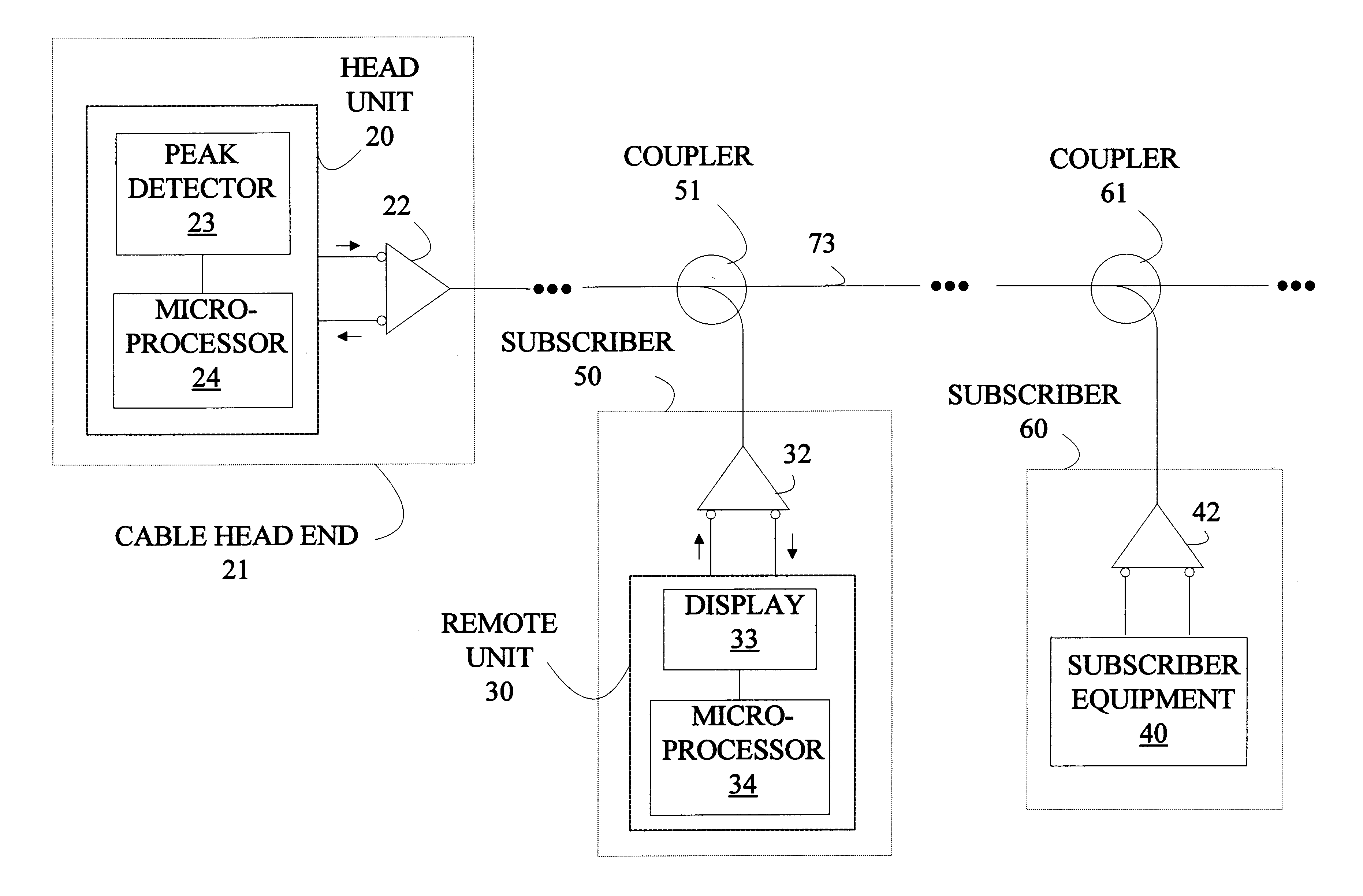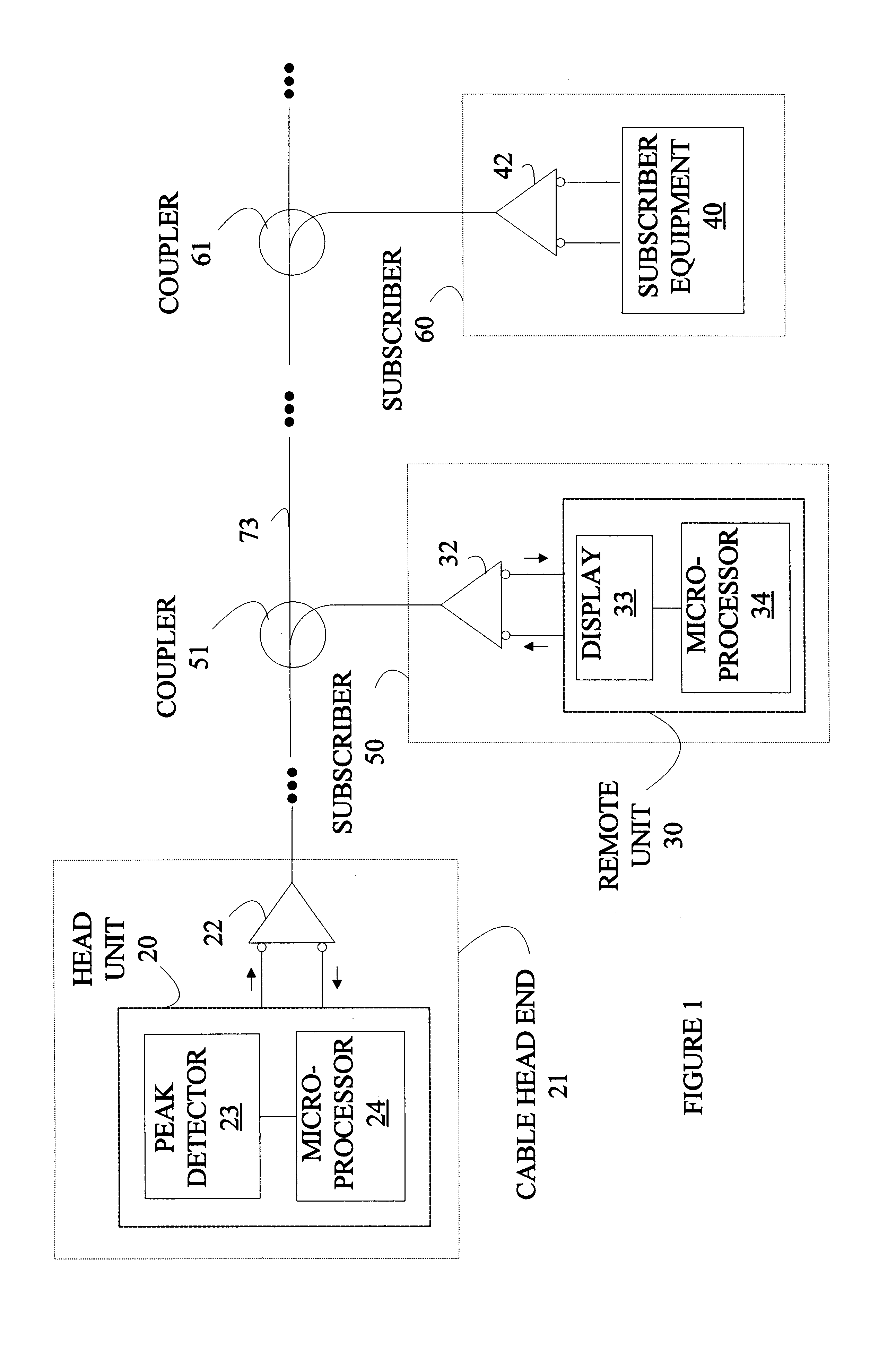Bi-directional test system for network analysis
- Summary
- Abstract
- Description
- Claims
- Application Information
AI Technical Summary
Benefits of technology
Problems solved by technology
Method used
Image
Examples
Embodiment Construction
The present invention may be more easily understood with reference to FIG. 1 which is a block diagram of a cable television network to which the components of the present invention are connected. The cable 73 originates at the cable headend 21. Various subscribers are connected to the cable via couplers. Exemplary couplers are shown at 51 and 61 which connect subscribers 50 and 60, respectively. The cable supports bi-directional communication via interface units. Exemplary interface units are shown at 22, 32, and 42. Communications at each subscriber location are accomplished with the aid of modems such as modem 40.
The present invention includes two types of communication processing units. The first type of unit, referred to as a headend unit, is coupled to the cable at the cable headend. A headend unit is shown at 20. At each subscriber location being tested, a remote unit such as remote unit 30 is connected. The remote units communicate with the headend unit to initiate various te...
PUM
 Login to View More
Login to View More Abstract
Description
Claims
Application Information
 Login to View More
Login to View More - R&D
- Intellectual Property
- Life Sciences
- Materials
- Tech Scout
- Unparalleled Data Quality
- Higher Quality Content
- 60% Fewer Hallucinations
Browse by: Latest US Patents, China's latest patents, Technical Efficacy Thesaurus, Application Domain, Technology Topic, Popular Technical Reports.
© 2025 PatSnap. All rights reserved.Legal|Privacy policy|Modern Slavery Act Transparency Statement|Sitemap|About US| Contact US: help@patsnap.com


